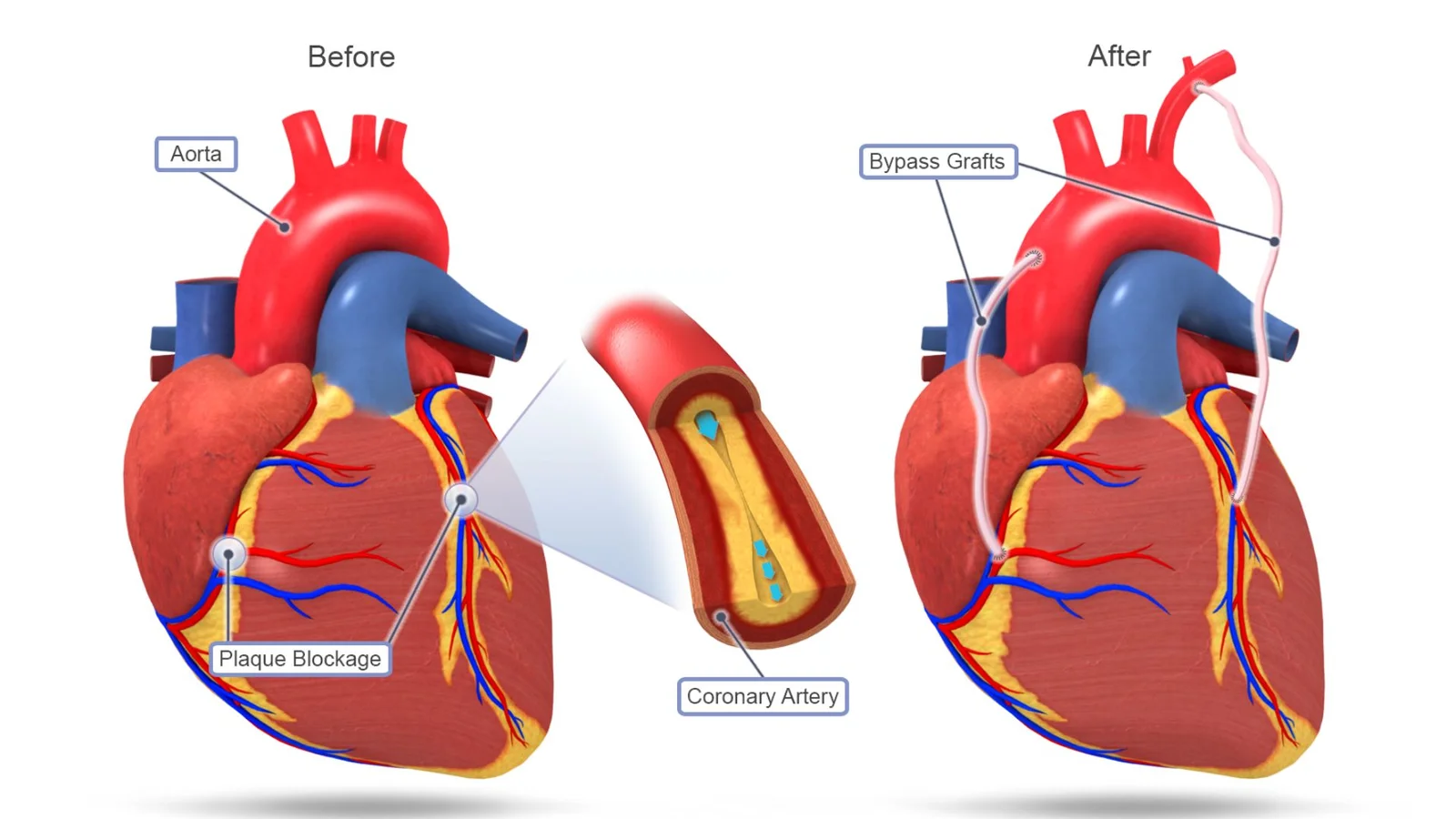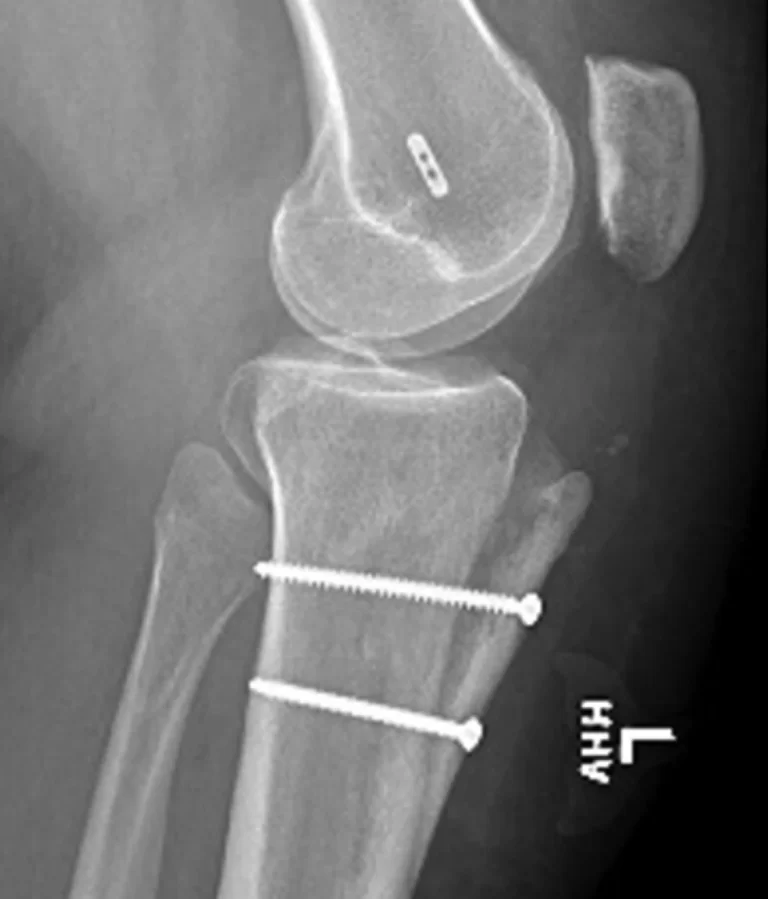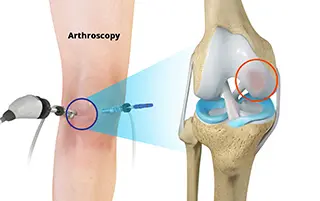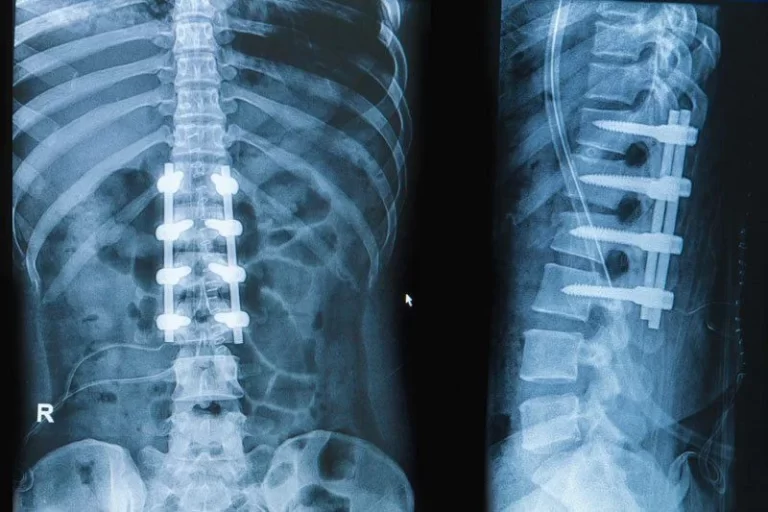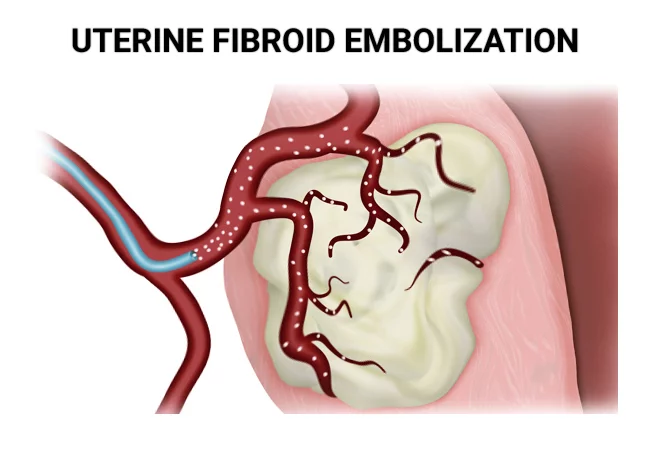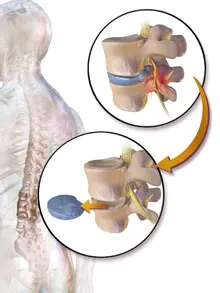Coronary Artery Bypass Surgery
Table of Contents
Introduction
Coronary Artery Bypass Surgery (CABG) is a surgical procedure designed to improve blood flow to the heart muscle by bypassing blocked or narrowed coronary arteries. It is commonly performed to treat severe coronary artery disease (CAD), a condition where the arteries supplying blood to the heart become narrowed or blocked due to the buildup of plaque (A combination of fat, cholesterol, and other substances).
Through coronary artery bypass surgery, a blocked or partially obstructed cardiac artery is circumvented by a new blood vessel. During the procedure, a healthy blood artery from the leg or chest is removed. The blood vessels are linked beneath the clogged cardiac artery. The new channel allows more blood to reach the heart muscle.
To repair damaged heart tissue, a procedure known as coronary artery bypass grafting (CABG), sometimes known as heart bypass surgery, is performed. When blood flow is interrupted by an artery blockage, heart attacks or symptoms similar to heart attacks may result. By creating a detour around obstructions using blood vessels from other parts of your body, CABG restores blood flow.
What Is Coronary Artery Bypass Surgery?
Surgical bypass, coronary artery bypass grafting, and coronary bypass surgery are other names for bypass surgery (CABG, pronounced “cabbage”). With around 400,000 operations performed every year, it is the most popular kind of open cardiac surgery in the United States. Most patients get excellent outcomes and continue to be symptom-free for ten or more years.
A technique known as coronary artery bypass grafting can be used to repair heart tissue that isn’t getting enough blood flow. If you are at a higher risk of having a heart attack in the near future or have had one recently, this surgery may help you feel better and function better in your heart.
During heart bypass surgery, a blood vessel from another area of the body is used by the surgeon to bypass a blocked artery. Your heart can again receive more blood and oxygen as a consequence.
Put yourself on a freeway, please. Traffic is held up ahead due to an accident. Cars are rerouted by emergency personnel to avoid congestion. At last, you can come back to the main road and find a clean route. Similar procedures include heart bypass surgery.
It may lessen your chance of having a heart attack as well as other issues. After you’ve healed, you’ll feel better and be able to get back to your regular activities.
To stop another obstruction, you’ll still need to maintain a good diet, exercise, and most likely take medication. Before the procedure, though, you should be aware of what to expect, how to get ready, potential difficulties, and the length of the recovery period.
There are other varieties, including as minimally invasive and multiple bypass.
Heart bypass surgery lowers the risk of death and heart attack and is a relatively safe and effective technique. Additionally, the surgery may lessen symptoms. Additionally, the surgery may lessen chest pain, which is one of the signs of coronary artery disease.
Heart bypass surgery is a difficult process that takes a long time to prepare for and recover from.
What conditions are treated by Coronary Artery Bypass Surgery?
Heart attacks and coronary artery disease are included in the category of disorders known as coronary heart disease, which is most likely to result in coronary bypass grafting (CABG). Additional conditions that are classified as coronary heart disease include angina pectoris, or chest pain brought on by heart ischemia, and silent myocardial ischemia, or heart ischemia without any symptoms.
Conditions categorized as coronary heart disease typically entail the constriction of your heart’s arteries due to the accumulation of plaque, a fatty substance that resembles wax. The arteries in your heart stiffen and narrow due to plaque accumulation inside them. Blood clots may form in an exposed plaque region, obstructing the affected arteries. . Blood clots may form in an exposed plaque region, obstructing the affected arteries. A heart attack may result from the ischemia the blockages induce in certain areas of your heart.
Why is surgery for coronary bypass done?
Your heart pumps blood throughout your body nonstop. Your heart needs blood flow to function, which is provided by a system of supply arteries that encircle it. Ischemia, pronounced “iss-key-me-uh,” is a condition that arises when tissues in your body do not receive enough blood flow.
Your heart’s muscle cells are particularly vulnerable to ischemia, and in cases where it is severe, they will begin to die. In order to treat ischemia, coronary artery bypass grafting, also known as CABG and pronounced “cabbage,” restores affected heart muscle tissue with blood flow.
To open up a clogged heart artery and start flowing blood again, coronary artery bypass surgery is performed. If other initial therapies for a heart attack aren’t effective, the surgery could be performed as an emergency procedure.
If any of the following apply to you, your doctor may suggest coronary artery bypass surgery:
- Occlusion of the left major coronary artery: This artery supplies a significant amount of blood to the heart muscle.
- Severe chest pain brought on by many cardiac artery constrictions. Even when the heart is at rest or very slightly exerted, the constriction decreases blood flow to it.
- You have several damaged heart arteries and poor function of your lower left heart chamber.
- A clogged coronary artery that is unresponsive to coronary angioplasty treatment. This less invasive procedure widens the artery by using a balloon at the end of a narrow tube known as a catheter. To maintain the artery open, a tiny coil known as a stent is usually utilized.
- An unsuccessful angioplasty, whether or not a stent is used. For instance, following stenting, an artery narrowed once more.
- Our doctor believes that the source of your angina, or chest pain, is blockages in many arteries that provide blood to your heart.
- The condition of at least one coronary artery impairs the function of your left ventricle, which pumps blood throughout your body most of the time.
- Your left main coronary artery, which supplies the majority of the blood to your left ventricle, is blocked.
- You’ve undergone additional treatments, but your artery is narrowing once again or they haven’t helped.
- You have new obstacles.
- A heart attack may result from coronary artery disease. It may result in the formation of a blood clot that stops blood flow. If alternative treatments aren’t working for you after a heart attack, or if you have certain issues, you might have bypass surgery as an emergency procedure.
What benefits does this process offer?
Due to its many benefits, CABG is a helpful and often used component in the treatment of heart issues.
A long record of application: The first CABG procedures were carried out by surgeons in the early 1960s. Later research and development contributed to this procedure’s status as a crucial and dependable method of treating myocardial ischemia in the decades that followed.
More beneficial for several obstructions or blockages in certain arteries: When a person has numerous blocked arteries in their heart, CABG is frequently the best option. It’s also a better method for removing obstructions in certain areas.
Numerous studies have connected CABG to better long-term results, such as increased chances of survival. This benefit frequently increases when combined with cutting-edge bypass methods that produce long-lasting effects.
Reduced danger for further treatments. Percutaneous coronary intervention (PCI), sometimes referred to as angioplasty, is the primary substitute for CABG. PCI frequently carries a greater chance of requiring a second surgery.
Types of Bypass Surgery:
Bypass operations come in a variety of forms. The optimal procedure for you will be suggested by your surgeon.
Traditional: This is the most commonly employed process. During the procedure, a machine circulates your blood while your heart is stopped and your chest is cut open.
On and off the pump: Usually, heart bypass surgery is performed on an open heart. To reach the heart, the surgeon creates a cut in the chest. The procedure can then be carried out either “on-pump” or “off-pump” by the surgeon.
During on-pump surgery, a heart-lung machine is used to pump blood and carry out the lungs’ gas exchange role. The machine facilitates easier heart surgery by enabling physicians to stop the heart.
Off-pump surgery, sometimes referred to as “beating heart surgery,” is performed without the use of a heart-lung machine while the patient’s heart is still beating.
Minimally invasive: Another name for this is a keyhole procedure. To access your heart in this procedure, the physician makes tiny incisions between your ribs.
Heart bypass surgery can be performed by surgeons without necessitating a full chest opening. They can make tiny incisions between ribs on a person’s side. The bypass surgery is then performed using tiny cameras and equipment inserted. This can be done by surgeons with or without robotic help.
Recovery times from minimally invasive cardiac surgery are usually shorter. Results from the techniques can be just as good as those from open surgery.
The number of blocked coronary arteries in your body can also determine how your surgery will go:
- Single bypass: There is a blockage in one artery. This is referred to as a single bypass operation when a surgeon just needs to bypass one blocked artery
- Double bypass: There are two obstructed arteries. Two grafts will be required if there are blockages in both arteries.
- Triple bypass: There is a blockage in three arteries. Three bypass grafts are required if there are three blockages.
- Quadruple bypass: There is a blockage in four arteries. Four grafts are required to bypass four coronary arteries if they are blocked.
- Quintuple bypass: There are five obstructed arteries. This requires five bypass grafts and entails the operation of all five major arteries that supply the heart.
Complications:
Since CABG is a significant procedure, there are a few possible risks and side effects. Even though most of these hazards and consequences can be prevented or treated, it’s nonetheless critical to comprehend them. Potential dangers consist of:
- Cardiac rhythm abnormalities, or arrhythmias: After CABG, atrial fibrillation is the most prevalent arrhythmia, and it raises the risk of stroke. Thankfully, it’s typically just a transient issue.
- Bleeding: As with any major surgery, there is a risk. Blood-thinner users will need to stop taking them before surgery (under their healthcare professional’s supervision and guidance) to prevent this.
- Infections. Infection is yet another potential surgical risk. Sepsis is an overreaction of your immune system that can be fatal if an infection spreads throughout your body. If you have two or more of the signs of sepsis—rapid breathing, confusion, fever, chills, or a fast heart rate—you should be treated as seriously as you would a heart attack or stroke. Sepsis is a medical emergency. Thankfully, with advances in surgical care and methods, severe infections following CABG are now uncommon.
- Delirium or confusion. These result in symptoms such as agitation, difficulty concentrating, memory issues, or abnormal behaviour (where the person acts and seems different from normal).
- Kidney-related issues.
- Stroke.
- Heart attack.
Risks:
There could be issues following bypass surgery, just like with other procedures. Among them are:
- Blood clots that increase the risk of lung issues, heart attacks, and strokes
- Fluid buildup around the heart
- Heart rhythm issue (arrhythmia)
- Heavy bleeding
- Kidney issue
- Infection at the incision site
- Memory loss and trouble thinking clearly
- Nerve damage
- Pain
- Reactions due to anaesthesia
- Stroke
- Heart attack
- Blood clots
- Pneumonia
- Problems breathing
- Reduced blood flow from your heart
Additionally, the graft cannot work and needs to be redone.
Numerous factors influence these risks, such as your age, the number of bypasses you receive, and the existence of any additional medical issues. Before your procedure, your surgeon and you will talk about these.
Every individual has different risks and possible problems. This will vary based on the treatment type, individual risk factors, and health.
Factors that may raise the risk of complications include:
- Undergoing several grafts concurrently
- The degree of heart damage already present
- Advanced age
- Having other chronic illnesses
- Being obese or overweight
- Rate of success
- Blockages in the legs’ arteries.
- COPD stands for chronic obstructive pulmonary disease.
- Diabetes.
- Renal illness.
- Although not very safe, heart bypass procedures are a severe procedure. Heart bypass surgery usually has favourable results. The process can enhance quality of life and lessen artery blockage symptoms.
To lower the risk of problems, medications to regulate blood pressure, stop bleeding, and prevent infection are usually administered before surgery. If you are diabetic, you might be given medication to regulate your blood sugar while having surgery.
Procedure:
To treat a blockage, doctors usually have several options. While less-invasive operations like stents and drugs may help doctors address the problem, this is not always the case.
When a patient has many bypasses, complex vascular disease, or other underlying medical issues like diabetes, heart bypass surgery is the recommended course of treatment.
Patients undergoing CABG are admitted to the hospital’s intensive care unit (also referred to as the critical care unit in other settings). Remaining in the intensive care unit (ICU) is imperative for patients with unique needs, such as those who have recently undergone CABG, due to the specialized training and experience that ICU staff members possess.
A patient may move to a standard medical-surgical room for the duration of their stay in the hospital once they are stable and the attending physician feels them ready. An average CABG patient stays in the hospital for eight to twelve days (longer for those who underwent CABG due to a heart attack, shorter for those with stable ischemic heart disease or related conditions).
Most patients with CABG will also finish a cardiac rehabilitation program when they are discharged from the hospital. These programs, also known as cardiac rehab, assist you in recuperating and regaining your strength following heart attacks or other intense cardiac treatments. Staff members in cardiac rehab programs are highly skilled and have specialized training. They often consist of physicians, nurses, exercise physiologists, dietitians, nutritionists, counselors, and specialists in behavioral health.
Before the process:
Prior to heart bypass surgery, patients must:
- Give up smoking right away, if applicable;
- Talk to the surgeon about which medications to keep taking or stop;
- Make plans for someone to stay with them when they get home;
- Avoid eating or drinking after midnight the night before surgery, and adhere to any other instructions given by the healthcare team or doctor.
- Before the treatment, a patient undergoing a scheduled heart bypass operation will have a chance to talk with their physician about the procedure. The surgical team will schedule arrival times, go over the procedure with you, and assist with paperwork.
If coronary artery bypass surgery is planned, admission to the hospital often occurs on the morning of the procedure. In the days and hours leading up to surgery, you undergo several blood and cardiac tests.
You will need to have several tests done before undergoing CABG to determine whether the procedure is safe for you to have and whether you need it.
- Chest radiography.
- EKG, or electrocardiogram. The electrical activity of your heart is recorded by a device.
- Echocardiography. Your heart’s size and shape are shown in a moving picture made possible by sound waves.
- Test your stress with exercise: Walking on a treadmill or riding a stationary bike increases your heart rate, and your doctor measures your blood pressure, heart activity, and other physiological information during this process.
- Nuclear cardiac stress test: After undergoing a stress test, you can have unique images taken of your heart. Your vein is filled with radioactive material to monitor the health of your heart and to determine whether any part of your heart muscle is damaged. The images will be compared with a different set taken while your heart is resting.
- Cardiac catheterization: A tiny tube is threaded through a blood vessel and into your heart by a surgeon, who injects a particular dye into it. After that, they create a picture known as an angiography, which illustrates the flow of your blood and any blockages.
- CT scan. Using a computer that converts X-rays of your heart into a three-dimensional image is an additional method to see how your blood is flowing.
- Coronary calcium scan: This is an additional type of CT scan that measures the quantity of calcium in your coronary artery walls, a sign of illness.
- Blood examinations: Your blood sugar, cholesterol, white and red blood cell counts, and other parameters will be measured by your physician.
- Urine examination. This demonstrates the functionality of your kidneys.
Before the procedure, your doctor will also advise you whether any dietary, lifestyle, or medication adjustments need to be made. Even natural vitamins and supplements should be disclosed to your doctor because they may have an impact on your bleeding risk.
It will also be necessary for you to plan for your post-operative rehabilitation.
Knowledge and Education:
Giving you information and education about what to do before and after surgery to help you have the best possible outcome is a part of getting ready for CABG. You’ll learn more about the following topics:
Drugs. Before the procedure, your doctor will go over the medications you take with you. Additionally, they will advise you on which medications to continue taking and which ones to quit (as well as when to stop). Sometimes they may start you on new meds or switch you to others.
Ways to get ready for surgery. You can get resources and information from your healthcare practitioner regarding how to get ready for the surgery.
This involves understanding the kind of assistance you’ll require at home, what to eat and what not to do after the process, what essentials you’ll need at home, and more. It also covers how to groom yourself and take a shower before the surgery, which frequently involves using specific soap.
During process:
Hospitals do significant surgery such as coronary artery bypass surgery. Cardiovascular surgeons are medical professionals who specialize in heart surgery. Cardiologists, or heart specialists, and a group of other healthcare professionals assist with your care.
An intravenous (IV) line is inserted into your hand or forearm by a medical professional before your surgery, and you will receive sedative medication to relieve anxiety.
You may expect the following when in the surgery room:
Anesthesia. An IV is used to administer a mix of medications along with a face mask. These drugs induce a pain-free, drowsy state in you. We refer to this as general anaesthesia.
Breathing machine: A physician inserts a breathing tube into your oral cavity. This tube attaches to a ventilator, which is a breathing apparatus. During and soon following the procedure, the machine breaths for you.
Heart-lung device. A heart-lung machine is used during surgery to maintain blood and oxygen flow throughout the body. The term for this is “on-pump coronary bypass.”
Typically, coronary artery bypass surgery lasts for 3 to 6 hours. The number of blocked arteries determines how long the operation takes.
Usually, a surgeon makes a large incision along the breastbone that runs down the middle of the chest. For access to the heart, the surgeon spreads open the rib cage. The heart is momentarily stopped with medication after the chest is opened. The heart-lung apparatus is activated. When your heart isn’t pumping, a device known as a heart-lung machine will continue to pump blood and oxygen throughout your body.
A portion of healthy blood vessels is excised by the surgeon, usually from the lower leg or the chest wall. A graft is a section of healthy tissue. The ends of the graft are attached by the surgeon beneath the clogged heart artery. One end of it will be attached to your aorta, a sizable artery that emerges from your heart. The other end will then be attached to an artery beneath the obstruction. This opens up a new channel for blood to pass through an obstruction. During coronary artery bypass surgery, many grafts may be used.
The surgeon can restart your heart and restore blood flow after implanting the bypass if needed. After that, they’ll wire your rib cage together so it can recover and lower it back into position. After that, they will use sutures and staples to seal the incision in your chest (stitches).
Your surgeon might do several bypass operations during the same procedure if you have several blockages.
After the procedure:
A group of medical professionals monitors you following coronary artery bypass surgery to make sure you are as comfortable as possible. As you awaken, you can experience pain and confusion. Typically, you can expect the following:
In an intensive care unit (ICU), you will awaken. You will still be using the breathing tube in your mouth. You will be uncomfortable and unable to speak. There will be nurses available to assist you. After a few hours, when you can breathe on your own, they will remove the tube.
When you can stand up and go to the bathroom by yourself, the catheter in your bladder will come out.
The IV line will also be removed once you can feed and drink on your own and are no longer in need of IV medication.
After the treatment, fluid will accumulate around your heart, so your doctor will insert tubes into your chest. After surgery, they will stay for one to three days to let the fluid drain.
You can get chest pain. The first two to three days following the surgery will cause you the most pain. For that, you’ll most likely receive pain medication. You receive medication via IV to treat pain and avoid side effects, including blood clots. Should you not be taking an aspirin daily, your physician might advise you to start. You might need to take aspirin daily for the rest of your life. Certain medical guidelines specify which patients can benefit from aspirin medication. Consult your physician about taking aspirin.
Additionally, you will be connected to devices that continuously monitor your blood pressure and heart rate. Following surgery, your medical team will constantly monitor you to look for any issues. Your heart rate and respiration are monitored by machines. You check your temperature frequently.
After surgery, you need to be able to walk one or two days later. After a few days in the intensive care unit, you will be transferred to a hospital room. After three to five days, you will depart and return home.
Cardiac recovery. This supervised program of education, counselling, and exercise—often referred to as cardiac rehab—helps improve heart health following heart surgery. While you’re still in the hospital, you’ll be urged to begin walking. Until you can safely follow a home program, you continue your cardiac rehab program at a medical centre after you return home
Following surgery, you should be on the lookout for any signs of complications while recovering at home. Have a visit with your doctor if you have:
- High temperature.
- Fast heart rate.
- pain around your chest wound, either new or worsening.
- a shift in skin tone surrounding your chest injury.
- bleeding or other fluid coming from the wound in your chest.
- Following coronary artery bypass surgery, recovery typically takes six to twelve weeks. You can normally resume driving, going back to work or the gym, and having sex after four to six weeks, with your provider’s approval. However, each person heals uniquely. Consult your medical professional for advice.
Variations of this surgical procedure:
Although most CABG patients are treated with identical approaches, there are times when a different approach is more appropriate for your specific circumstances. Among the modifications to this procedure are:
- CABG off-pump. A heart-lung bypass machine is not used in this form of CABG procedure. This implies that the surgeon does the entire procedure while your heart is still beating, without stopping it. Not every patient is a good candidate for this kind of surgery, and the surgeon has greater difficulties. On the other hand, certain surgeons are skilled and experienced in doing CABG surgery in this manner.
- Minimally invasive CABG. This type of CABG avoids fracturing or raising your rib cage and making a major incision in your sternum. Instead, your heart is accessed through the spaces between parts of your ribs by the surgeon using tiny incisions. The off-pump approach may also be used in this version of the process.
- Robot-assisted CABG: Surgeons can perform CABG surgery with the aid of very sophisticated equipment called surgical robots. A surgeon “drives” the robot—that is, they direct its movements—to accomplish this. With robotic surgery, fewer incisions are made, and your sternum is not opened and lifted. Robotic surgery can employ the off-pump approach or a heart-lung bypass.
- Hybrid process. This protocol combines CABG with alternative methods or strategies. This typically entails using non-CABG procedures like stenting for the remaining damaged blood arteries in addition to robot-assisted CABG on at least one artery. The process of inserting a stent—a device having a frame-like structure—into an artery is known as stenting. Because the stent functions as a skeleton inside the artery, its insertion aids in keeping the artery open.
Recovery:
It happens gradually. Following surgery, you could feel worse than you did before. For a few weeks following the procedure, you may not eat at all and may even experience constipation. Sleep problems may arise throughout your hospital stay. You might experience some swelling in the area where the surgeon removed a portion of a healthy vein in your leg. This is typical.
You’ll feel better every day as you heal, but it will take time. Your body may need up to three months to fully heal from bypass surgery.
Life After Bypass Surgery:
Your angina symptoms will either go away completely or significantly improve when you’ve healed. You’ll have less chance of having a heart attack and be able to engage in more physical activity. The best part is that the procedure may extend your life.
However, coronary artery disease cannot be cured by bypass surgery. The grafted arteries may become clogged by the same things that initially caused your arteries to become obstructed. You will need to modify any habits that raise your risk of heart disease as well as take action to treat medical issues including diabetes, high blood pressure, and high cholesterol.
To live a healthy life following a cardiac bypass, there are various requirements.
Medications: Medication may be prescribed by your doctor to treat illnesses that can harm your arteries and avoid consequences. This could consist of:
- ACE inhibitors for blood pressure decrease
- Blood thinners or antiplatelet medications like aspirin can reduce the risk of blood clots.
- Beta-blockers or calcium channel blockers to lower the blood pressure, decrease chest pain, and treat abnormal heart rhythm
- Diuretics to remove extra fluid from your body and lower your blood pressure
- Nitrates for pain in the chest
- Statins for lowering cholesterol levels
- These might be a lifelong medication for you.
Heart Rehabilitation: After bypass surgery, your hospital or medical facility might provide cardiac rehabilitation to help you rebuild your strength, develop healthy living habits, and take care of your mental well-being.
For around three months, a program usually consists of many in-person group sessions per week. After that, you’ll apply what you’ve learned independently. A group of experts including nutritionists, counselors, and exercise physiologists will be working with you.
Changes in lifestyle
You can take daily action to protect your long-term heart health:
- Quit smoking: Giving up smoking is one of the most crucial things you can do to protect your general health and heart. Your physician can assist you in selecting the best course of action.
- Take action: Most days, experts advise 30 to 60 minutes of moderate-intensity activity, including Brisk walking or swimming. But you’ll have to gradually work your way up to that following Bypass surgery. Several workout techniques can be taught to you and assisted in properly performing by a cardiac rehab program. Before you begin, get your doctor’s approval. Keep in mind that any action is better than none at all.
- Control your weight: Find out from your doctor what your ideal weight is. Reducing weight can help lower blood pressure, blood sugar, and cholesterol in overweight individuals.
Make heart-healthy eating choices: A particular diet, such as the DASH regimen, which has been shown to reduce blood pressure and “bad” cholesterol, may be advised by your doctor. However, heart-healthy diets typically consist of these items:
- More veggies and fruits, especially leafy, dark greens
- Increased amounts of whole grains and beans, such as brown rice and oatmeal
- Skinless chicken and fish are examples of lean protein.
- Unsaturated fats found in foods like avocados, salmon, and nuts
- Reduced amounts of saturated fat from meat, whole-milk dairy products, and fried foods
- Reduced sodium
- Reduced sugar
- Reduced alcohol intake
Reduce your tension. You can protect your body from the damaging effects of stress with exercise, meditation, and relaxation practices. Finding the source of your stress and, if possible, making the necessary adjustments may also assist. You can learn good coping mechanisms from a therapist.
Get good sleep: Your body heals itself while you sleep, and this includes the blood vessels and heart tissue. High blood pressure and heart disease might result from getting poor-quality sleep. Make an effort to obtain 7 to 9 hours per night. If you’re having problems with that, consider:
- Make sure it’s dark, silent, and cold in the bedroom.
- Adhere to a regular bedtime and wake-up time each day.
- Before going to bed, find ways to decompress, such as having a warm bath.
- Avoid caffeine and alcohol
- A few hours before going to bed, turn off all of your electronics.
- You can receive treatment from your doctor for sleep disorders like insomnia or sleep apnea.
Get support:
Following heart bypass surgery, anxiety and despair are common emotions. Consult your physician about receiving supportive therapy or medicines. Seek a support group where you can interact with people who have similar experiences to yours. It might be necessary for you to make some significant lifestyle adjustments, which won’t be simple. Tell your family members how they can support you or perhaps join you in making healthy decisions.
Throughout the first few months, your doctor will see you multiple times to monitor your development. If your symptoms worsen or don’t get better, give them a call. If you think you might need to be seen immediately.
Outlook:
In the US, heart disease remains one of the biggest health issues. Heart disease can be treated in a variety of ways. The greatest option for treating blocked arteries is heart bypass surgery, which is performed on hundreds of thousands of patients each year.
People can restore their quality of life prior to developing a cardiac problem with the safe and efficient help of heart bypass surgery.
Difficulties are uncommon but not impossible. Most people can expect an improved quality of life quite soon following surgery, assuming no complications.
FAQs
CABG stands for coronary artery bypass grafting.
The most frequent kind of cardiac surgery, CABG, involves the surgeon connecting a healthy vein or artery from another part of your body to the blocked coronary artery to flow blood past it.
After bypass surgery, patients are far more likely to experience subsequent cardiac events, such as persistent chest discomfort, heart attacks, heart failure, and an elevated risk of death. Follow-up care is therefore essential.
To treat heart disease, is a stent or bypass surgery better?
When an artery is too calcified to sustain a stent or when putting a stent in an artery is technically too challenging, CABG can be the best course of action, according to Dr. Krause. The majority of CABG patients won’t require blood thinners.
Following CABG, the cumulative survival rates were 77%, 39%, 14%, and 4% at 10, 20, 30, and 40 years, respectively. Following PCI, the rates were 78%, 47%, 21%, and 12% at 10, 20, 30, and 35 years, respectively. Following PCI procedures, the expected life expectancy following CABG was 17 and 18 years, respectively.
Bypass surgery typically involves open chest surgery. Heart attack, stroke, and death are among its hazards. Typically, recovery takes at least two months. Your best chance of living a longer, healthier life is to maintain a heart-healthy lifestyle and take medication, regardless of whether you undergo surgery or not.
References
- Krans, B. (2023, December 20). Heart Bypass Surgery. Healthline. https://www.healthline.com/health/heart-bypass-surgery#medications
- Harris, S. (2023, October 4). Heart bypass surgery: Types of procedure, recovery times, and outlook. https://www.medicalnewstoday.com/articles/322443
- Coronary artery bypass surgery. (2024, March 8). Wikipedia. https://en.wikipedia.org/wiki/Coronary_artery_bypass_surgery
- Langmaid, S. (2006, December 31). Heart Bypass Surgery. WebMD. https://www.webmd.com/heart-disease/heart-disease-bypass-surgery
- Professional, C. C. M. (n.d.). Coronary Artery Bypass Surgery. Cleveland Clinic. https://my.clevelandclinic.org/health/treatments/16897-coronary-artery-bypass-surgery
- Coronary artery bypass surgery – Mayo Clinic. (2024, January 20). https://www.mayoclinic.org/tests-procedures/coronary-bypass-surgery/about/pac-20384589

